
Shown above with 18" Turbo Look I wheels
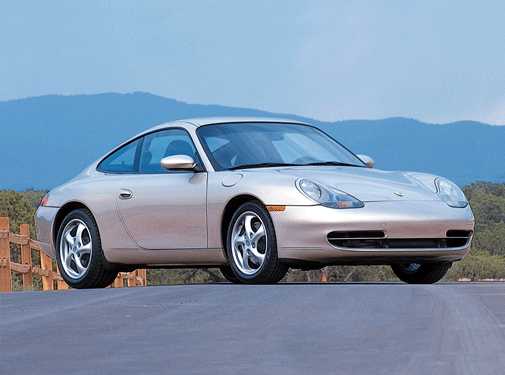
Shown above with (rather rare) 17" stock wheels

Shown above with 18" Turbo Look I wheels
Styling Study of the Type-996 Porsche 911
1999 brought a dramatic styling difference to the Porsche 911, but along with various models of the 911, there are subtle styling differences between the various 911s of the 996 model type. The following is an exploration of that (although I'm ignoring the cabriolet models because they're simply variations on the Carrera Coupe). All the pictures below should be in Arctic Silver Metallic, which not only looks awesome but shows the styling differences well, but apparently is the most common color for the 996 911 (white would have perhaps been better for these comparisons, but good luck finding good pictures on the Internet of white 911s!).
1999-2001 Porsche 911 Carrera/Carrera 4 Coupe
The first of the water-cooled 911s (available in '98 over in Europe). One of the most distinctive attributes of the new front end is the abandonment of round headlights in favor of headlights identical to those of the Boxster. And, of course, a smoothing of all of the 911's lines to create the most beautiful 911 yet. Also abandoned was the strip-style taillights of the air-cooled 911s in favor of a more modern (and attractive) separated taillight configuration.

Shown above with 18" Turbo Look I wheels

Shown above with (rather rare) 17" stock wheels

Shown above with 18" Turbo Look I wheels
1999-2000 Porsche 911 GT3
Built to satisfy homologation regulations for GT racing, the 911 GT3 was the high-performance 911 before the Turbo's introduction. Chief differences beneath the skin were a more powerful, larger engine (360-hp 3.6L race-derived engine instead of the standard 300-hp 3.4L engine), adjustable sport suspension, weight reduction, Recaro racing seats, and a roll cage (which displaced the useless backseats and may have only been available on the Clubsport version, I'm not sure). Some accessories, like air conditioning, were removed but were no-cost options to put back on. Outside, the GT3 featured a lower, more aggressive front fascia, smoked front turn signal indicators (so-called "clear corners"), side skirts, an adjustable fixed rear spoiler, and lightweight 18" wheels (called SportDesign wheels).
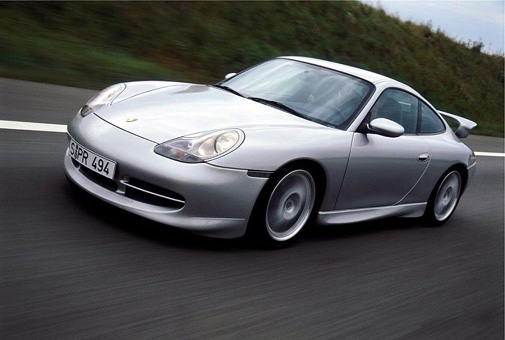
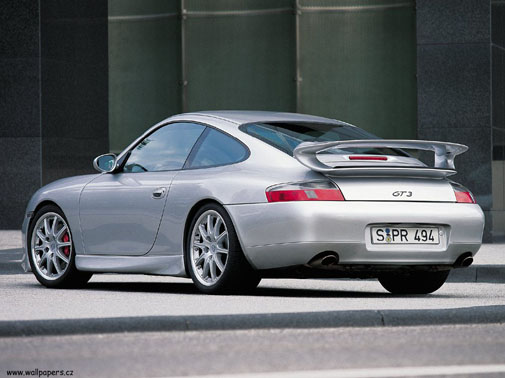
Although the GT3 wasn't legal in the United States (bumper regulations or ride height, I believe), the look was available in the stunning Cup Aerokit, which, as you can see below, looked identical (if the SportDesign wheels were included with the aerokit). One difference is in the center "hole" in the grill, where the Cup Aerokit is filled in and the GT3 is not.
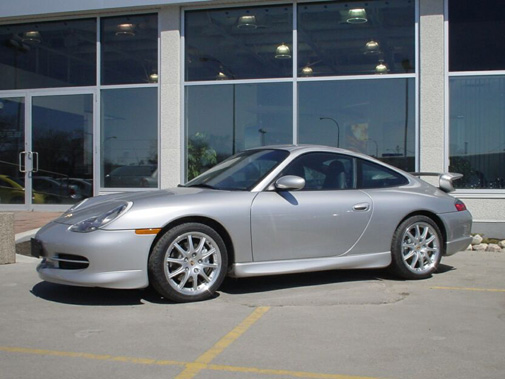
Shown above with 18" SportDesign wheels

Shown above with 18" Turbo Look I wheels
Another aerokit available, which is significantly less common, was the "Carrera Aerokit." It combined the GT3-style front fascia and side skirts with a "Carrera Spoiler," instead of the "Cup Spoiler." Although the body kit would disappear, the Cup Spoiler would continue to be offered on the 2002+ 911 Carreras.

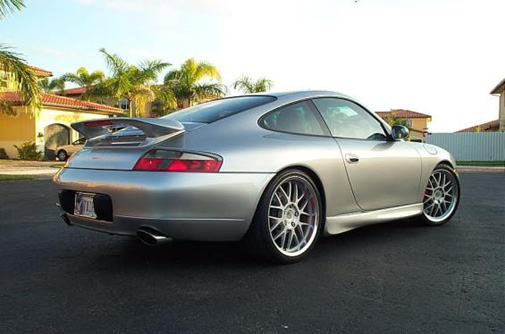
2000+ Porsche 911 Turbo
2000 brought the return of the über-911: the 911 Turbo. Stylistically, the 911 Turbo is a major departure from the Carrera and GT3. It has a radically different front fascia (which was marred early on in the US with so-called "bumperettes"), flared rear fenders with intake vents for the intercoolers, louvers on the rear bumper (reminiscent of the '80s super-Porsche, the 959), an integrated "ducktail" spoiler that, like the Carrera's, deployed at high speeds to increase downforce, and standard 18" hollow-spoke wheels (replicas of which Porsche calls the Turbo Look II wheel).
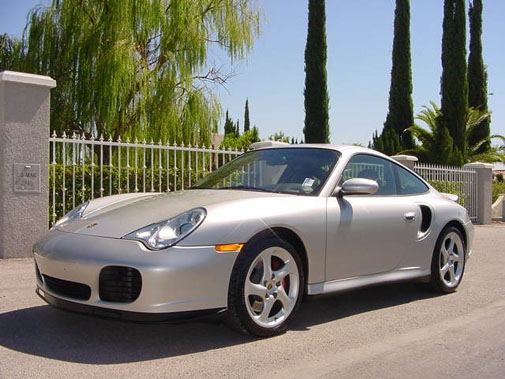
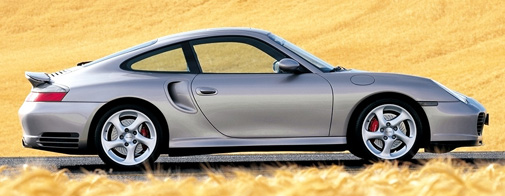
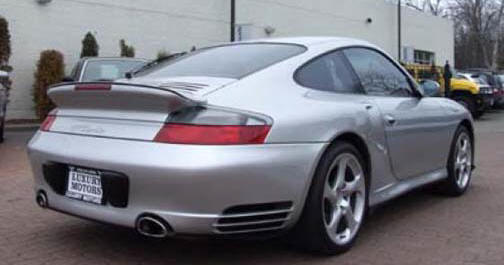
2001+ Porsche 911 GT2
The newest über-911, based on the Turbo's body. Still, Porsche would rather we thought of the GT2 not as a beefed up, stripped down Turbo, but as a turbocharged version of the GT3. Perhaps that's to justify the fact that the performance difference isn't quite as big as the $70,000 price difference. Stylistically, the differences are the obvious (adjustable) rear spoiler and the new front fascia, but there is also the less obvious lip at the edge of the "hood" for ventilation and downforce purposes.
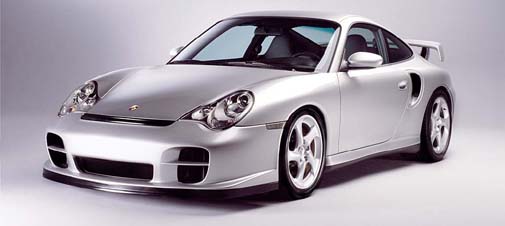


2002+ Porsche 911 Carrera Coupe
2002 brought a facelift for the Carreras (and two new non-turbo models) that improved both aerodynamics and cooling capabilities (by sculpting the front and rear bumpers, as is obvious with the "puckered" front grill), and the headlights were swapped from the Boxster's to the Turbo's (to appease those who complained the 911 looked too much like the Boxster). Also introduced were new, lightweight, 5-spoke 18" wheels for the Carrera. Although 17" ones might technically be stock, the new "Carrera" wheels were pretty much standard (and are shown in the pictures below). Under the skin, the 300-hp 3.4L flat six was replaced with a 3.6L version that made 320-hp and (most importantly) featured VarioCam Plus—a feature previously only in the 911 Turbo and GT2. The interior also got standard cupholders and, at long last, the return of the glovebox! All around, a great update for the 911... except for the looks aren't so clear cut. But look below and judge for yourself:
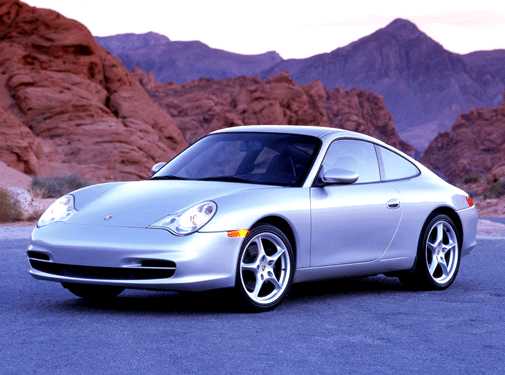
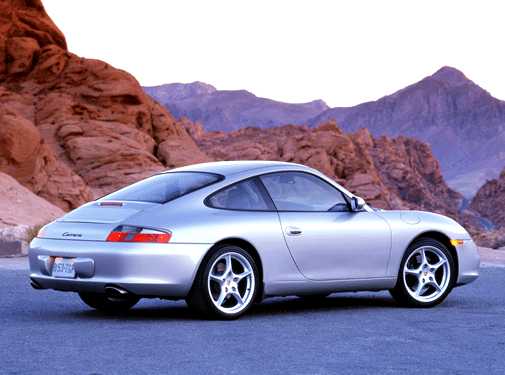
Just because this is my web page, I'm gonna throw an opinion in here: I like the 1999-2001 body style better if it has the Cup or Carrera Aerokit. If not, this design is a huge improvement. That said, I love the Turbo-style headlights, so ideally, the Cup/Carrera Aerokit on a 2002 911 Carrera would be awesome, but that'd be some serious custom fabrication.
2002+ Porsche 911 Carrera 4S
Turbo-look 911s have become something of a tradition for Porsche, and with both the 993 and 996, this model has born the "S" designation. 2002 brought the introduction of the 996 Turbo-look 911: the Carrera 4S. Not merely a Carrera 4 with a Turbo body, the Carrera 4S is basically the exact same car as the Turbo minus the engine. Stylistically, the cars look identical except for three things: the lack of the rear fender air intakes (there aren't any intercoolers to feed), the lack of a "ducktail" spoiler (the Carrera 4S retains the same type of spoiler as the old Carrera 4), and the air-cooled 911-style red reflector strip between the two taillights. Although the wheels look like the Turbo's, they're just Turbo-look II wheels, and as such, they're not hollow spoke (on the Carrera 4S they bear "4S" logos, however).

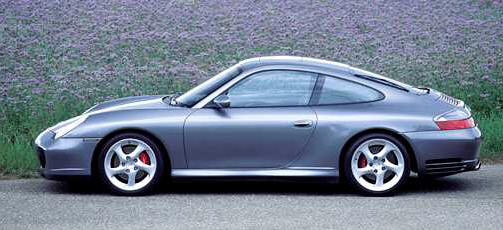
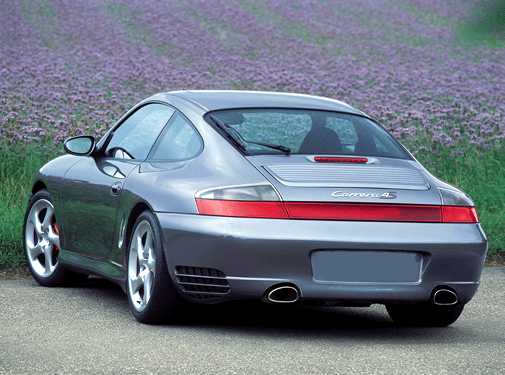
2002+ Porsche 911 Targa
In 2002, the 911 Targa returned and, like its 993 predecessor, the new Targa isn't really a targa (because it has no "T-tops"). In fact, it's simply a 911 Carrera Coupe with a huge sunroof stretching from the top of the windshield to the bottom of the rear windshield. Half of it slides open, and the half that doesn't has been converted into a hatchback design. Other than that (and the badges, of course), the Targa is identical to the Carrera Coupe.
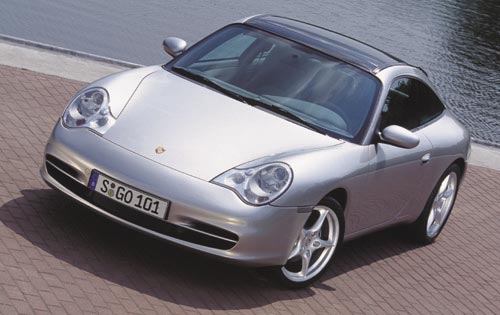
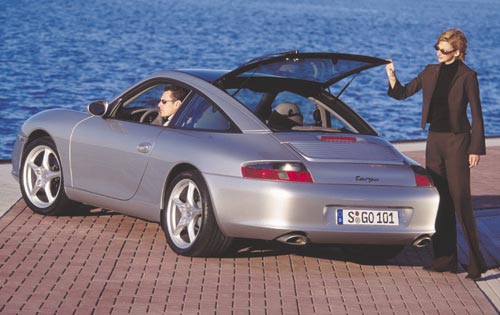
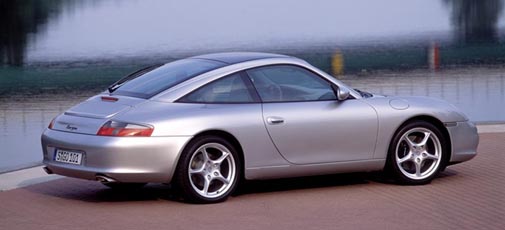
2003+ Porsche 911 GT3
For 2003, the 911 GT3 returned, and this time it's street legal in the United States (still, like the old GT3, the look is available in the Cup Aerokit II). Like the previous GT3, the new one features a different front fascia, fixed adjustable rear spoiler, side skirts, and wheels than the standard Carrera. The new engine, although the same displacement as the old GT3's at 3.6L, has been bumped from 360 to 380-hp. And if the marketing is any indication, then Speed Yellow is the official color of the new GT3 (and perhaps Arctic Silver or Guards Red was the old one's). Also, the GT3 is built on the Carrera 4S's chassis (for a variety of reasons), so the rear fenders have a slight flare to them that the old GT3 didn't have.
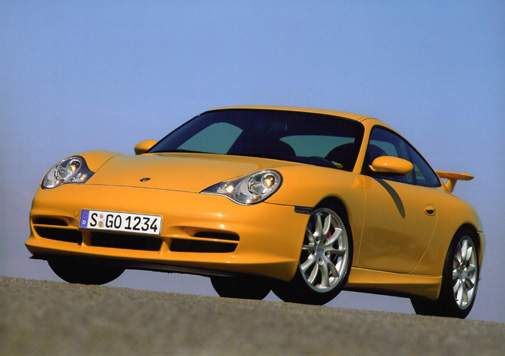
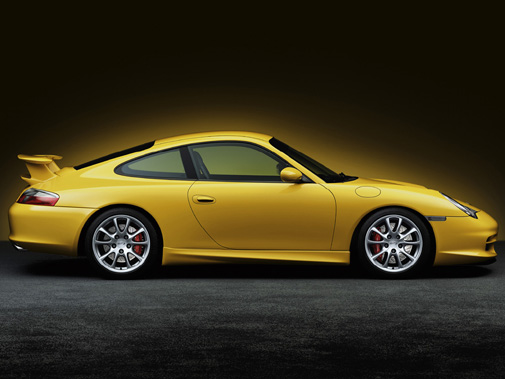
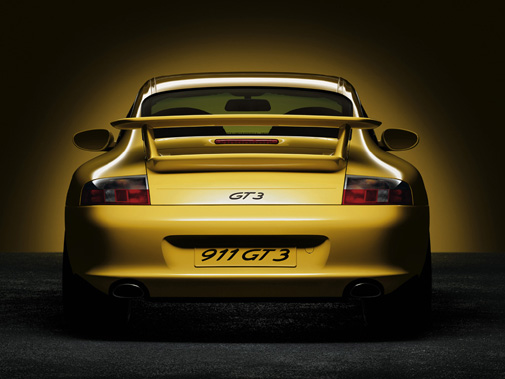
Well, as of right now, that's it for the 996's story (and with a rumored forthcoming 911, that could be all of the 996's story). If I've made any mistakes, let me know.
I got most of these images from
official Porsche pictures or car ads I've seen over the years. If you own any of
them and would like them removed, please just let me know.
Designed in July 2003 by Robert McDonald